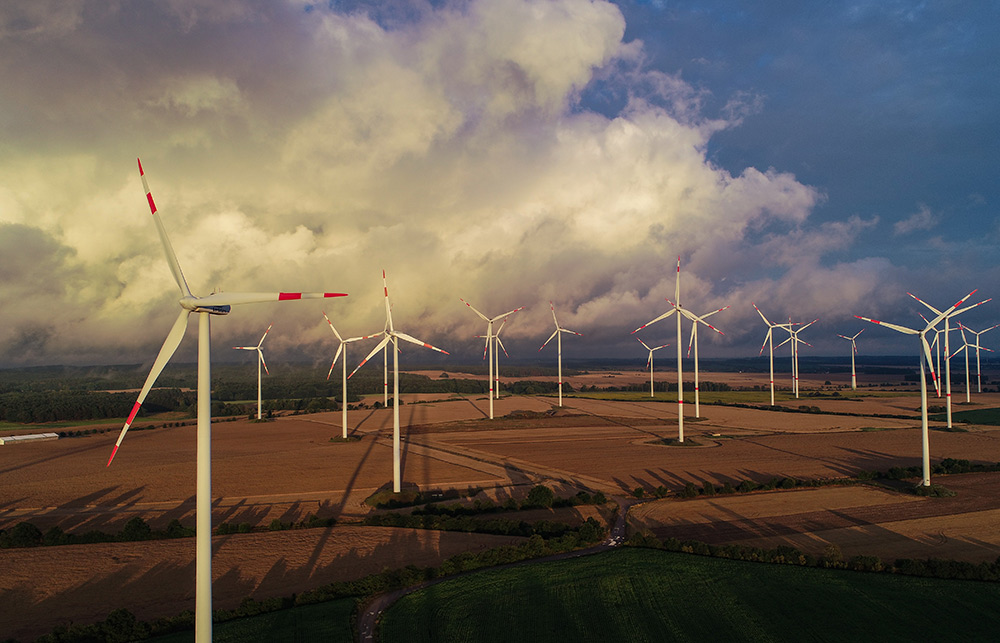
欧盟行政机构完善了其减排计划的目标,将在2030年之前减排55%。
欧盟在六年前制定了当前目标,提出在1990年水平基础上排放量减少40%。9月16日,欧盟委员会的主席乌尔苏拉•冯德莱恩在其首次国情咨文演讲中暗示将制定更远大的目标。9月17日,欧盟委员会就此事发布正式文件,并坚信欧盟能够同步实现减排的雄心与经济增长。
欧盟委员会称,截至去年,欧盟已经成功减排25%,而在1990年至2019年期间,欧盟经济增长了62%。(同期内,美国GDP增长了三倍以上。)
欧盟委员会表示:“这证明我们可以在应对气候变化的同时,保证经济持续增长和创造就业。本文件中的影响评估证明,通过执行恰当的措施,到2030年在1990年水平基础上排放量减少55%这个目标,在经济上是可行的,而且对欧洲有益。”
欧洲正在采用定性会计处理,以展示低碳世界的价值,这类分析通常不使用一个国家的国民经济核算。例如,欧盟委员会发现“减少温室气体排放量的同时,也降低了慢性支气管炎等疾病的发病率,减少了入院治疗人数、活动受限天数、药物使用、出现呼吸道疾病症状的天数以及哮喘和呼吸问题的就诊次数等。因此,减少空气污染通过减少旷工和提高工人效率,释放出经济增长的潜力。”
这份报告中提供了一项趋势线分析,证明即使温室气体排放量下降,GDP也保持稳步增长,这或许将让《绿色协议》(Green Deal)的多数拥护者满意。

实现气候中立的路径
必须修改原有目标
欧盟委员会表示,欧盟当前的目标无法在2050年之前实现气候中立目标,也无法满足《巴黎协定》(Paris Agreement)的条件:《巴黎协定》的签约国承诺将全球温升幅度努力限制在工业化前水平以上1.5摄氏度之内(到2019年,全球平均气温已经升高了1.1摄氏度)。
欧盟的能源专员卡德里•希姆森在一份声明中表示:“根据[欧盟]成员国现有的政策和计划,我们有望超过在2030年之前减排40%的现有目标。这证明提高目标的力度不仅是必要的,也是现实的。”
欧盟委员会有关新2030年目标的议案现在需要获得欧洲议会和欧盟成员国批准。欧盟在议案中承认,受到新冠疫情的影响,在2030年之前减排55%的目标所需要的投资项目,面临的“环境更加恶化”。
解决方案是什么?“我们需要欧盟企业在低碳解决方案的制定、部署和商业化方面,发挥主导作用。”
发展可再生能源,淘汰煤炭
欧盟的温室气体排放超过四分之三来自化石燃料燃烧,以及除二氧化碳以外其他气体的泄露和不规范工业排放。其他排放来自工业(二氧化碳排放)、农业和废弃物处理(非二氧化碳排放)。
欧盟减排计划的主力将是可再生能源:欧盟委员会希望到2030年,可再生能源占总能源消耗量的40%,煤炭消耗量较2015年减少70%,并提高建筑行业的能源效率。对于建筑行业,欧盟委员会希望翻新率提高一倍以上(同时也希望建筑改造得设计精美)。
欧盟委员会表示,到2030年,汽车每公里碳排放量应该比2021年的预测排放量减少一半左右,并且“为了实现气候中立……传统汽车将被零排放汽车逐渐取代,并增加可持续的集体交通服务的占比。”
最后,欧盟委员会称,2050年实现气候中立的目标意味着“到时候公路上行驶的几乎所有汽车都必须达到零排放标准”。欧盟委员会还表示,将在未来几个月研究一个关键问题:什么时候在市场上禁止销售内燃机汽车。(财富中文网)
翻译:刘进龙
审校:汪皓
德国布兰登堡,一座风电场里的风力涡轮机。
欧盟行政机构完善了其减排计划的目标,将在2030年之前减排55%。
欧盟在六年前制定了当前目标,提出在1990年水平基础上排放量减少40%。9月16日,欧盟委员会的主席乌尔苏拉•冯德莱恩在其首次国情咨文演讲中暗示将制定更远大的目标。9月17日,欧盟委员会就此事发布正式文件,并坚信欧盟能够同步实现减排的雄心与经济增长。
欧盟委员会称,截至去年,欧盟已经成功减排25%,而在1990年至2019年期间,欧盟经济增长了62%。(同期内,美国GDP增长了三倍以上。)
欧盟委员会表示:“这证明我们可以在应对气候变化的同时,保证经济持续增长和创造就业。本文件中的影响评估证明,通过执行恰当的措施,到2030年在1990年水平基础上排放量减少55%这个目标,在经济上是可行的,而且对欧洲有益。”
欧洲正在采用定性会计处理,以展示低碳世界的价值,这类分析通常不使用一个国家的国民经济核算。例如,欧盟委员会发现“减少温室气体排放量的同时,也降低了慢性支气管炎等疾病的发病率,减少了入院治疗人数、活动受限天数、药物使用、出现呼吸道疾病症状的天数以及哮喘和呼吸问题的就诊次数等。因此,减少空气污染通过减少旷工和提高工人效率,释放出经济增长的潜力。”
这份报告中提供了一项趋势线分析,证明即使温室气体排放量下降,GDP也保持稳步增长,这或许将让《绿色协议》(Green Deal)的多数拥护者满意。
必须修改原有目标
欧盟委员会表示,欧盟当前的目标无法在2050年之前实现气候中立目标,也无法满足《巴黎协定》(Paris Agreement)的条件:《巴黎协定》的签约国承诺将全球温升幅度努力限制在工业化前水平以上1.5摄氏度之内(到2019年,全球平均气温已经升高了1.1摄氏度)。
欧盟的能源专员卡德里•希姆森在一份声明中表示:“根据[欧盟]成员国现有的政策和计划,我们有望超过在2030年之前减排40%的现有目标。这证明提高目标的力度不仅是必要的,也是现实的。”
欧盟委员会有关新2030年目标的议案现在需要获得欧洲议会和欧盟成员国批准。欧盟在议案中承认,受到新冠疫情的影响,在2030年之前减排55%的目标所需要的投资项目,面临的“环境更加恶化”。
解决方案是什么?“我们需要欧盟企业在低碳解决方案的制定、部署和商业化方面,发挥主导作用。”
发展可再生能源,淘汰煤炭
欧盟的温室气体排放超过四分之三来自化石燃料燃烧,以及除二氧化碳以外其他气体的泄露和不规范工业排放。其他排放来自工业(二氧化碳排放)、农业和废弃物处理(非二氧化碳排放)。
欧盟减排计划的主力将是可再生能源:欧盟委员会希望到2030年,可再生能源占总能源消耗量的40%,煤炭消耗量较2015年减少70%,并提高建筑行业的能源效率。对于建筑行业,欧盟委员会希望翻新率提高一倍以上(同时也希望建筑改造得设计精美)。
欧盟委员会表示,到2030年,汽车每公里碳排放量应该比2021年的预测排放量减少一半左右,并且“为了实现气候中立……传统汽车将被零排放汽车逐渐取代,并增加可持续的集体交通服务的占比。”
最后,欧盟委员会称,2050年实现气候中立的目标意味着“到时候公路上行驶的几乎所有汽车都必须达到零排放标准”。欧盟委员会还表示,将在未来几个月研究一个关键问题:什么时候在市场上禁止销售内燃机汽车。(财富中文网)
翻译:刘进龙
审校:汪皓
The European Union’s executive has fleshed out its proposal to force a carbon-emissions cut of 55% by 2030.
The current target, set six years ago, is a 40% reduction compared with 1990 levels. On September 16, European Commission President Ursula von der Leyen used her first State of the Union speech to signal a more ambitious goal—and on September 17, as it published its official communication on the matter, the Commission insisted that ambition could go hand in hand with economic growth.
By last year, it said, the EU had already managed to lop a quarter off its emissions, while over the 1990 to 2019 period the economy had grown by 62%. (During the same period, U.S. GDP grew more than threefold.)
“This proves that we can tackle climate change and ensure sustained economic growth and job creation at the same time,” the Commission said. “The impact assessment accompanying this communication demonstrates that an emissions reduction of 55% by 2030, compared to 1990 levels, is both economically feasible and beneficial for Europe, with proper policies in place.”
Europe is resorting to some qualitative accounting to reveal the value in a low-carbon world, the kind of analysis that’s often left off a country’s national accounts. For example, it found “the reduction in greenhouse gas emissions also reduce[s] morbidity, i.e., chronic bronchitis, hospital admissions, restricted activity days, medication use, days with…respiratory symptoms, and consultations for asthma and breathing problems. Reductions in air pollution therefore trigger potential for growth in economic activity through decreased absenteeism and increased worker productivity.”
Buried deep in the report it offers a trend line analysis that would please most advocates of a Green Deal, showing steadily increasing GDP growth even as greenhouse gas emissions fall.
The old target had to change
The Commission said the EU’s current target would not allow it to reach its goal of climate neutrality by 2050, nor to uphold the terms of the Paris Agreement: The climate deal’s signatories said they would try to limit global warming to 1.5°C above preindustrial levels (the global average temperature already clocked a 1.1°C increase by 2019.)
“Based on existing policies and the plans of [the EU’s] member states, we are on course to surpass our current 40% target for 2030. This shows that being more ambitious is not only necessary, but also realistic,” said Energy Commissioner Kadri Simson in a statement.
In its proposal for a new 2030 target—which will now need to be approved by the European Parliament and the EU’s member states—the Commission admitted that the COVID-19 pandemic had “worsened the conditions” for the investments that are needed to hit a 55% reduction goal by 2030.
The solution? “We will need to enable EU companies to get into the pole position developing, deploying and commercializing low-carbon solutions.”
Renewables in, coal out
Just over three-quarters of the EU’s greenhouse gas emissions come from the burning of fossil fuels, along with leaks and irregular industrial discharges of gases other than carbon dioxide. The rest of the emissions come from industry (CO2) and agriculture and waste industries (non-CO2).
The biggest contributors to the proposed emissions cuts will be renewable energy: The Commission wants renewables to account for as much as 40% of total energy consumption by 2030, with coal consumption down 70% from 2015 levels—and increased energy efficiency in the building sector. On that front, the Commission wants to see renovation rates more than double (and it wants those renovations to look good, too).
As for cars, carbon emissions per kilometer should by 2030 be around half of those expected in 2021, the Commission said, adding that “to achieve climate neutrality…conventional cars will need to gradually be displaced by zero emissions vehicles, and greater use should be made of sustainable collective transport services.”
Ultimately, the Commission said, that 2050 target for climate neutrality will mean “nearly all cars on the roads must be zero emissions by that time.” It added that it would in the coming months consider the crucial question of when cars with internal combustion engines will need to be banned from the market.






